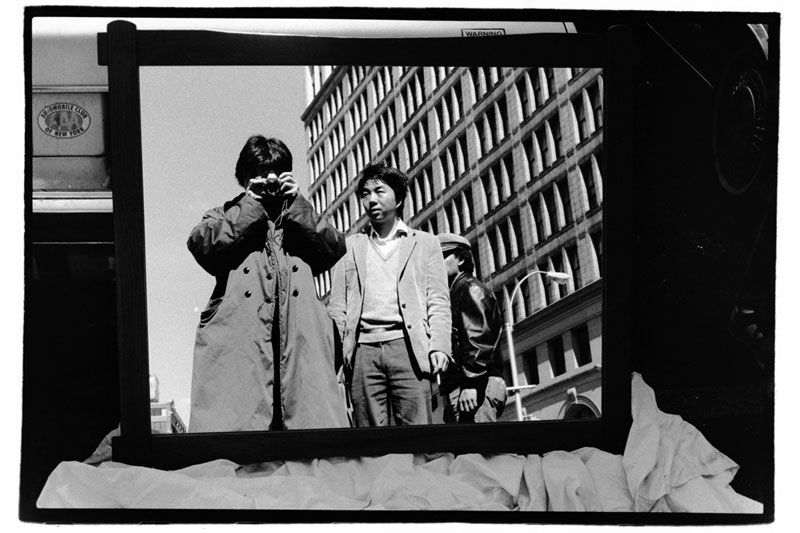Asia Society
725 Park Ave. at 70th St.
Tuesday – Sunday through August 14, $10, 11:00 am – 6:00 pm
212-288-6400
www.asiasociety.org
www.aiweiwei.com
The Asia Society had already planned to mount the intimate exhibition “Ai Weiwei: New York Photographs 1983-1993” well before the controversial conceptual Chinese artist was arrested for so-called economic crimes by the Chinese government on April 3. But suddenly without access to the prints used for the show’s 2009 debut at the Three Shadows Photography Art Centre in Beijing, Three Shadows worked with Weiwei’s wife to sift through the ten thousand only-recently-discovered shots he had taken during his ten-year stay in New York City, which depict a critical period in his development. Fashioning himself as a kind of melding of Andy Warhol and Allen Ginsberg, Weiwei brought his camera everywhere, photographing riots and protests in Tompkins Square Park, Bill Clinton on the campaign trail in Harlem, Wigstock and other downtown concerts and events, and even Al Sharpton marching in support of Tawana Brawley. But like Warhol and Ginsberg, he primarily photographed his friends and fellow artists as they lounged around in bed, did their laundry, and lived an essentially bohemian existence in the East Village, based in his Third St. apartment. In fact, Weiwei became friends with Ginsberg, who is featured in several of the photos. The 227 inkjet on Fantac Innova Ultra Smooth Gloss works, arranged in two chronological, horizontal rows running across the gallery rooms and often containing elements direct from the contact sheet, lend insight into Weiwei as both artist and activist, a role that would come to define his very being and earn him international renown. Even after his release on June 22, under which he was ordered to be silent for a year, a Google+ page that just might be Weiwei’s own has been gaining prominence, increasing the artist’s visibility as he once again thumbs his nose at the Chinese government, if he is indeed behind it.
Born in 1957, Weiwei was between the formative years of twenty-five and thirty-five when he took the New York photos, which depict such fellow Chinese artists as composer Tan Dun (Crouching Tiger, Hidden Dragon, the opera Peony Pavilion), who will be conducting the Metropolis Ensemble in The Martial Arts Trilogy on August 12 at the free Lincoln Center Out of Doors festival; artist Xu Bing, who currently has a show at the Morgan Library; director Chen Kaige (Farewell My Concubine, Temptress Moon); performance artist Hsieh Tehching, who had a retrospective at MoMA last year; cinematographer Zhao Fei (Raise the Red Lantern, Sweet and Lowdown); painter Yao Qingzhang; and cinematographer-director Gu Changwei (Red Sorghum, Peacock), among many others. The photos’ in-the-moment compositions recall Ginsberg’s pictures of the Beat Generation, featuring Jack Kerouac, Neal Cassady, William S. Burroughs, Gregory Corso, and the rest of the Beats. Again like Ginsberg, Weiwei captured a very specific instant in time, an important decade in which Chinese art began to take hold in America ten years after Nixon’s historic visit to China. “The New York I knew no longer exists,” Weiwei says about the exhibition. “Looking back on the past, I can see that these photographs are facts, but not necessarily true. . . . The present always surpasses the past, and the future will not care about today.” Weiwei’s photos, which are imbued with a joie de vivre, indeed evoke the past, the present, and the future, with the photographer always front and center.
